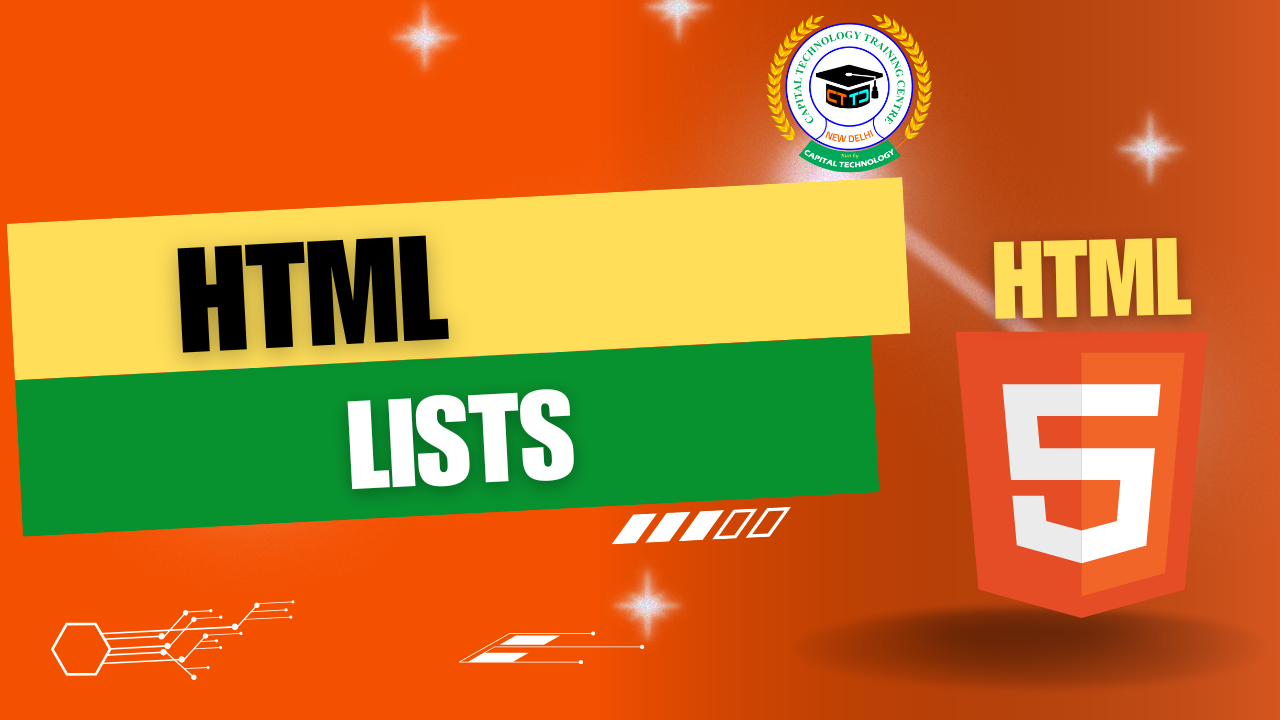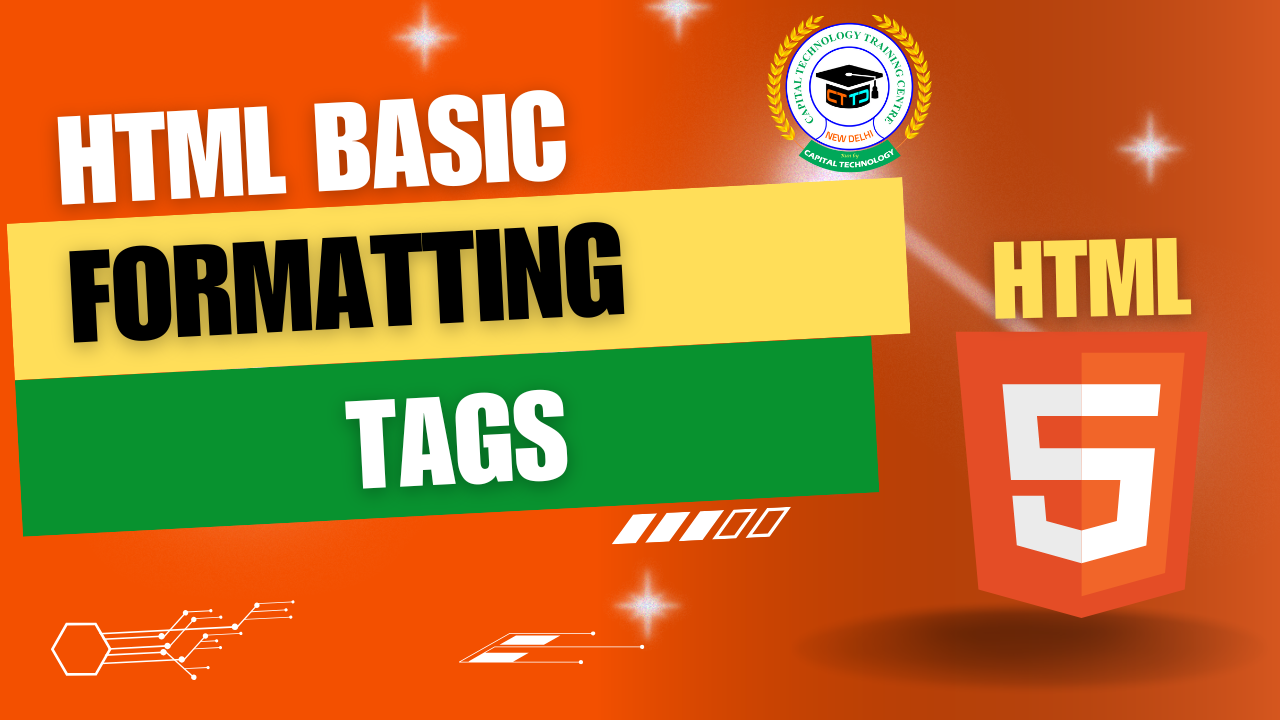– Structure, Types, and Usage
When creating a web page, displaying information in the form of lists can help improve readability, clarity, and organization. Whether you’re outlining steps, features, ingredients, or navigation menus — HTML lists are the perfect solution.
In this blog, we’ll learn:
- What HTML lists are
- Why they’re important
- The different types of lists
- How to use them with examples
What Are HTML Lists?
HTML lists are used to display a group of related items in a structured format. They are a fundamental part of web content, allowing information to be organized clearly and efficiently.
Importance of HTML Lists
- ✅ Improve content readability
- ✅ Organize data logically
- ✅ Enhance SEO (search engines understand structured lists better)
- ✅ Essential for navigation menus and structured instructions
Types of HTML Lists
HTML supports three main types of lists:
1️⃣ Unordered List (<ul>)
- Displays a list of items with bullets
- No specific order is implied
Syntax:
html
CopyEdit
<ul>
<li>HTML</li>
<li>CSS</li>
<li>JavaScript</li>
</ul>
Output:
- HTML
- CSS
- JavaScript
2️⃣ Ordered List (<ol>)
- Displays a list of items in a specific order
- Items are numbered (1, 2, 3…) or use Roman numerals, letters, etc.
Syntax:
html
CopyEdit
<ol>
<li>Turn on the computer</li>
<li>Open the browser</li>
<li>Visit the website</li>
</ol>
Output:
- Turn on the computer
- Open the browser
- Visit the website
3️⃣ Description List (<dl>)
- Used for listing terms and their descriptions
- Combines <dl> (description list), <dt> (term), and <dd> (description)
Syntax:
html
CopyEdit
<dl>
<dt>HTML</dt>
<dd>HyperText Markup Language</dd>
<dt>CSS</dt>
<dd>Cascading Style Sheets</dd>
</dl>
Output:
HTML
HyperText Markup Language
CSS
Cascading Style Sheets
Styling Lists with Attributes
You can customize list appearance using the type attribute:
For Ordered Lists (<ol>):
html
CopyEdit
<ol type=”A”>
<li>Step One</li>
<li>Step Two</li>
</ol>
Outputs:
A. Step One
B. Step Two
Other values: type=”1″ (default), “a”, “A”, “i”, “I”
For Unordered Lists (<ul>):
By default, uses bullet points — but you can style them using CSS (e.g., circle, square, none).
html
CopyEdit
<ul style=”list-style-type: square;”>
<li>Item One</li>
<li>Item Two</li>
</ul>
Best Practices
- Use <ul> when the order doesn’t matter
- Use <ol> for step-by-step or ranked content
- Use <dl> for glossary-type content or definitions
- Avoid nesting lists too deeply for readability
Conclusion
HTML lists are more than just bullet points or numbered steps — they are a powerful tool for organizing and presenting content. With just a few tags, you can make your website more readable, interactive, and user-friendly.




